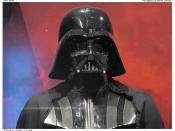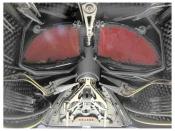ENG 314: Essay One "Whose Future?"� In his book American Films of the 70's, Peter Lev states "science fiction is removed from the world of everyday reality, which makes it a privileged vehicle for the presentation of ideology."� Lev goes onto further suggest that comparing science fiction films of the same time can be an analysis of contrasting social visions (Lev 165). Lev uses Star Wars, Alien, and Blade Runner to test his hypothesis. According to Lev "Star Wars presents a conservative future, whereas Alien and Blade Runner create futures linked to liberal and socially critical ideas"� (Lev 166). Lev is correct in his interpretation; however he does little to expand on his assumptions about ideology. Further analysis of these films, Star Wars in particular, and their contemporaries provides many examples of ideology.
Lev interprets Star Wars as a "modern quest narrative, which blends sources such as Arthurian legend, and westerns"æ."�
The result is a physical as well as spiritual adventure in order to serve a higher purpose. Lev and Arthur Berger, author of Manufacturing Desire: Media, Popular Culture and Everyday Life, point to this mythic or fairy-tale aspect. Because it takes it roots from myth, as well as history Star Wars presents conservative ideological views. Adam Roberts, author of Science Fiction, points to the major tie-ins Star Wars has with what could be considered the traditional American movie: the western. Roberts suggests that the Cantina scene "" reminiscent of a bar fight - is but one example of Star Wars attempts to model a western. Han Solo, a sort of space-cowboy, is another example of Star Wars tie-ins to westerns. Male characters as the dominant heroes, a damsel in distress, clear separation of good and evil, and a benevolent father figure who guides the hero are all conservative qualities...


